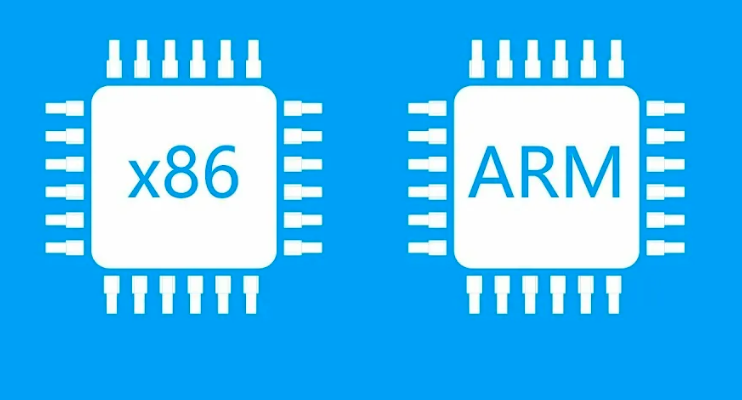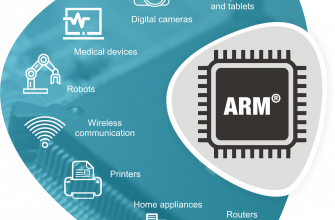In this article, we will look at the main differences between two popular processor architectures: ARM and x86. Both architectures have their own advantages and disadvantages, which make them more or less suitable for different types of devices and applications.
History and overview of architectures
ARM
ARM (Advanced RISC Machine) is a family of processors with RISC (Reduced Instruction Set Computing) architecture developed by the British company ARM Holdings. ARM processors were first introduced in 1985 and have since become the main choice for mobile and embedded devices.
x86
x86 is a family of CISC (Complex Instruction Set Computing) processors developed by Intel. x86 processors appeared in 1978 and became the dominant architecture for desktop computers, servers, and laptops.
Differences in design
| Criterion | ARM | x86 |
|---|---|---|
| Type of architecture | RISC (Reduced Instruction Set Computing) | CISC (Complex Instruction Set Computing) |
| Instructions | Simpler and shorter instructions | More complex and longer instructions |
| Code size | Usually less | Usually more |
| Number of registers | More registers | Less registers |
Performance and energy efficiency
ARM processors typically have better energy efficiency and lower power consumption, making them the preferred choice for mobile and embedded devices. x86 processors typically have higher performance due to complex instructions and branch prediction, making them more suitable for desktops, servers, and laptops where maximum performance is required.
Operating system support
x86 processors support a wide range of operating systems, such as Windows, macOS, Linux, and others. ARM processors also support many operating systems, but they may be less compatible with some programs and applications developed for the x86 architecture.
Market Application
ARM processors are the preferred choice for mobile and embedded devices, while x86 processors dominate desktops, servers, and laptops.
Conclusion
ARM and x86 architectures have their own advantages and disadvantages that make them more or less suitable for different types of devices and applications. In general, ARM processors are preferred for mobile and embedded devices due to their high energy efficiency and low power consumption, while x86 processors are preferred for desktops, servers, and laptops that require maximum performance and support for a wide range of operating systems and applications.
Examples of processors
| CPU | Architecture | Manufacturer | Approximate application |
|---|---|---|---|
| Apple M1 | ARM | Apple | Laptops, mini-PCs |
| Qualcomm Snapdragon 888 | ARM | Qualcomm | Smartphones, tablets |
| NVIDIA Jetson AGX Xavier | ARM | NVIDIA | Robotics, AI, Edge Computing |
| AMD Ryzen 9 5900X | x86 | AMD | Desktop computers, workstations |
| Intel Core i9-10900K | x86 | Intel | Desktop computers, workstations |
| Intel Xeon Gold 6226R | x86 | Intel | Servers, workstations |









